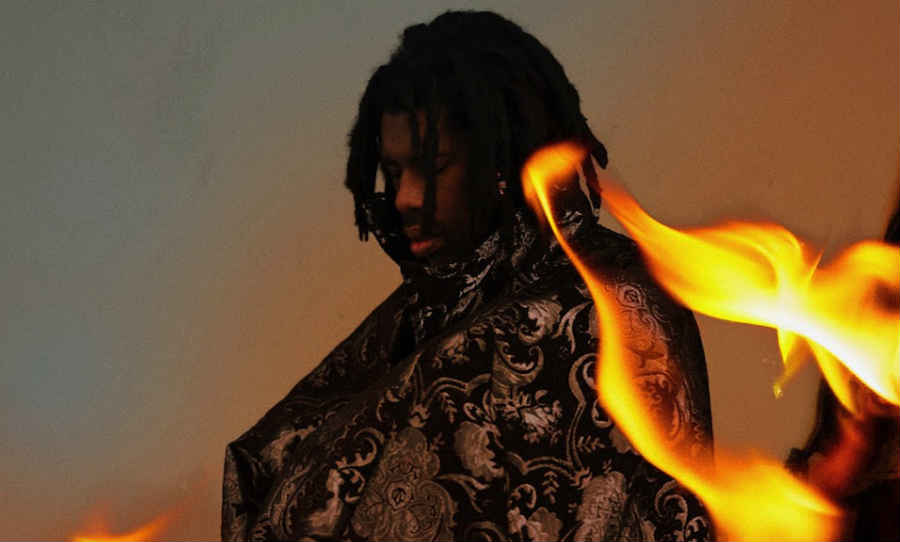The mysterious MF DOOM teamed up with Madlib to produce Madvillainy. A singular statement of vintage soundscapes and mind-bending lyricism.
MF DOOM – a man with too many aliases to list – pretty much takes the cake for preserving anonymity in the midst of fame. In fact, ‘cult status’ has probably never been so apt; who else can cover the vast lyrical terrain of MF DOOM so memorably, yet remain so mysterious? With Madvillainy, DOOM and producer Madlib – who also tends to be reclusive – took on the combined alias of Madvillain and created an indie classic.
The record was released by Stones Throw and over time, has become its best seller. It had no right to be. Madvillainy, born in the peak of hard-hitting, but glossy productions from Jay-Z, Eminem, 50 Cent et al., is a dusty affair, rich with retro breaks, crusty samples and a spirit of adventure just big enough to contain the lyrical gymnastics of the masked one.

Coast to coast
By the time the Madvillain collaboration came to pass, Stones Throw was still a fledgling label. The operation was centred around founder Peanut Butter Wolf’s abode in L.A. Madlib joined the label and the house, setting forth on a career in relentless crate-digging and creating sampled-based collages, set to the tempo of classic hip hop.
He found acclaim on Shades of Blue, an album composed of samples from the venerable Blue Note label collection. He even had his own alter ego project – Quasimoto – with pitched-up raps juxtaposed against stoned-out beats.
MF DOOM (whose actual name is Daniel Dumile) on the other hand, cut his teeth in colder climes of New York. He formed a group called KMD, alongside his brother. When his brother was killed after being hit by a car, and KMD was dropped by their label, Dumile was sent into a spiral.
When he eventually recovered and revived his career, he began obscuring his face, first with stockings before eventually modelling his look on the Marvel comics character, Doctor Doom. DOOM’s debut, Operation Doomsday, was by no means a commercial success, but it did enough to make Stones Throw pay attention to a fresh and unconventional voice in hip hop. The label reached out to DOOM and he and Madlib got to work on the beginnings of Madvillainy.
Crate digging in Brazil
After their first round of demos, Madlib spoke at the Red Bull Music Academy in São Paulo, Brazil. This trip turned out to be pivotal in the construction of Madvillainy. Despite the all-expenses-paid trip and the potential for the partying that entails, Madlib instead dove headlong into work. Finding rare LPs on the streets of a foreign country is perhaps not that unusual, but to make use of it so productively is a rare feat.
Though there were certainly DAWs around at this time, audio editing and specifically sampling in the box wasn’t nearly as intuitive as it is now. Instead, Madlib relied on a simple but sublime trinity of gear to put together his masterpieces: a turntable for listening, a tape deck for recording and the BOSS SP-303 for sampling.
The 303 (subtitled ‘Dr. Sample’) is a simple, affordable, yet ingenious device favoured by Four Tet, Panda Bear of Animal Collective and famously the late J Dilla, who used it extensively while ill in hospital to create Donuts.
It’s a compact device that’s able to sample a CD-quality for short periods but could drop sample rates for longer samples, resulting in lo-fi digital grittiness. Being a BOSS instrument, there’s ample provision for effects including DJ-friendly favourites like reverb, delay, distortion and vinyl simulator.
The leak
In an event befitting of the Madvillainy title, a cassette full of tracks that were destined to go on the final record was smuggled from Madlib’s Brazilian hotel room and taken back to the States, to be promptly leaked on the internet, more than a year before the album was finally released.
After a hiatus, Madvillain reconvened to reassess the album. The leak was a potential disaster, but instead, DOOM recut all his vocals in the style that would become the album’s signature. Stone’s Throw chief Peanut Butter Wolf told Pitchfork that, “… he decided to rap in a more mellow, relaxed, confident tone. I think he did it to make it different from all the other projects he dropped those years.”
He also penned Accordion at this time – a track featuring a heavy beat with a thumping kick and the snappiest of snares, only to be topped by an awkward accordion loop and DOOM’s unique poetry and flow.
If this was the MC’s time to take a bow, Bistro – which was also composed in this time – was Madlib’s time to take centre stage. Kicked off by some glorious one-shot slap bass samples, the sumptuous harp and harmonies transport you the red velour of a late-’70s nightclub. The panned maître d “how do you do” samples literally welcome you to the album. You’re in for a wild ride.
Somehow, the 22-track Madvillainy was crammed into 46 minutes. It’s bursting at the seems with Madlib’s kaleidoscope of sounds and matched by MF DOOM’s daring exploration of the outer edges poetic possibility. 16 years on from its release, it’s an insane trip through the psyche of two artists at the peak of their powers.

